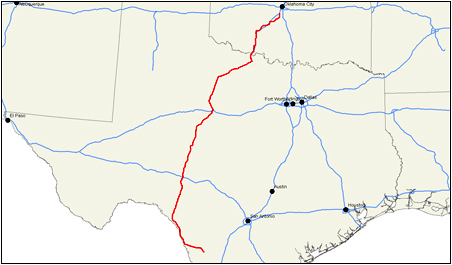
Source: Map of Texas & Oklahoma, Wikimedia Commons
This resource focuses on situations involving linear inequalities and determining the reasonableness of the solutions to the inequalities.
Some problem situations require you to set up an inequality before they can be solved.
Emilio is planning to visit his family in Oklahoma. The distance from his house to his family’s house is 292.5 miles. If Emilio drives at most 65 miles per hour, how long will it take him to complete the trip?

Source: Map of Texas & Oklahoma, Wikimedia Commons
To calculate the time, t, it will take Emilio to complete the trip use d = rt. 292.5 ≤ 65t, or 4.5 ≤ t. Therefore, it will take Emilio at least 4.5 hours to complete the trip.
For her garden, Mrs. Anderson bought 3 times as many lilies as daisies. The lilies cost $3 each and the daisies cost $4 each. If the total charge for both kinds of flowers was less than $60, not including tax, what is the maximum number of daisies that Mrs. Anderson could have purchased?

Source: Orange lilies, SantaRosa Old Skool, Flickr

Source: Daisy, audreyjm529, Flickr
To calculate the number of daisies, d, set up the following inequalities:
d = number of daisies
4d = cost of daisies
3d = number of lilies
9d = cost of daisies
So, 9d + 4d < 60
Or, 13d < 60.
Therefore, d < 4.6 and the maximum number of daisies Mrs. Anderson could have purchased was 4.